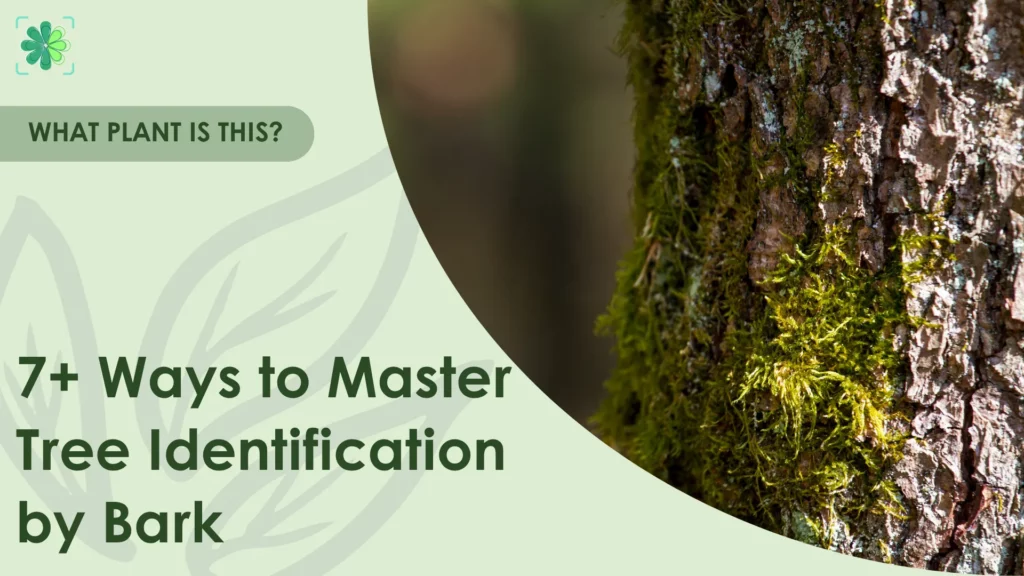
Tree identification by bark is a skill anyone can learn with a bit of observation and practice. This guide walks you through the basics, such as texture, color, and patterns, and shares nine simple ways to identify different trees by examining their bark. You’ll also find real examples from places like Michigan, Ontario, Georgia, and the Northeastern U.S. Whether you’re on a hike or in your backyard, this article will help you spot tree species more confidently.
Bark Basics: What You Need to Know Before Identifying
Bark is one of the few features on a tree that stays visible year-round, and it changes more than most people realize. When a tree is young, its bark is often smooth and tight. As it ages, the bark thickens and begins to crack or split. In many species, these age-related changes happen in predictable ways.
For example, the bark of a sugar maple begins smooth and gray, but develops deep vertical ridges as the tree matures. In some pines, thick bark acts as insulation, helping older trees survive wildfires. Bark also varies depending on species and environment. A tree growing in full sun may develop harder, darker bark than one in the shade. Trees in wet areas often have softer, thinner bark, while those in dry or exposed regions grow thicker, more protective layers.
To identify trees by bark, focus on three main traits:
- Texture: smooth, rough, peeling, scaly, or shaggy
- Color: white, gray, reddish, dark brown, or even nearly black
- Pattern: vertical lines, blocky plates, diamond shapes, or deep ridges
These features are reliable across seasons and can help you recognize many tree species at a glance, even without leaves.
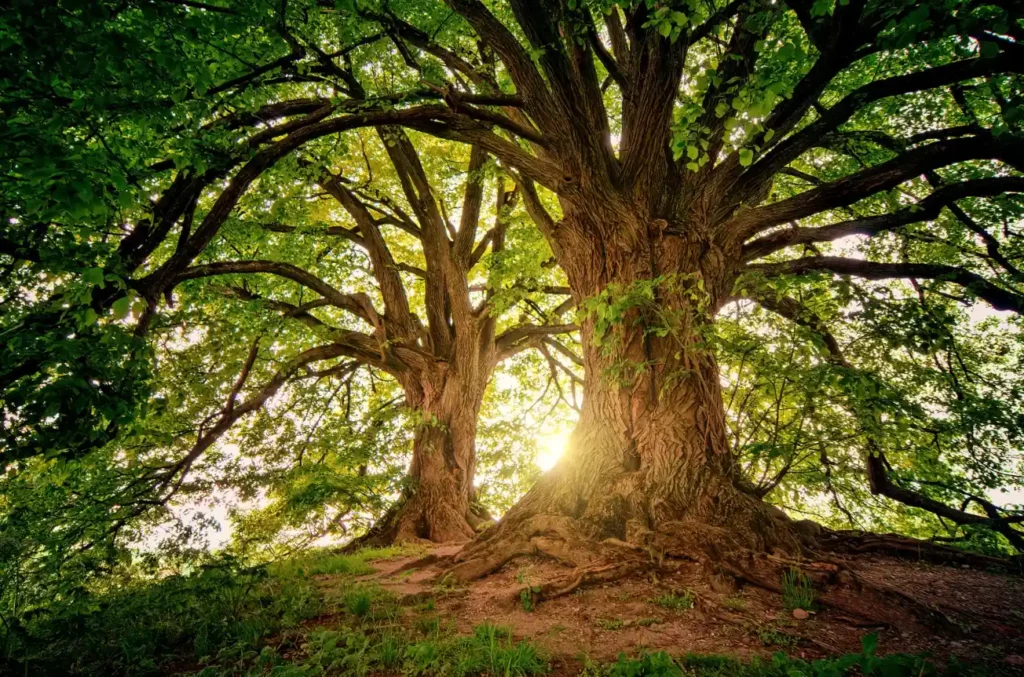
9 Ways to Identify a Tree by Its Bark
For anyone interested in tree identification by bark, learning how to “read” bark is like learning a new visual language. Below are nine effective ways for you:
Start with Bark Texture
Bark texture isn’t just rough or smooth. It exists on a spectrum, often changing along the trunk. Younger trees (or younger sections) may have tight, unbroken bark, while older parts develop cracks, furrows, or plates.
Texture can also shift from base to canopy. A tree may exhibit smoother bark closer to the roots and more rugged textures higher up, especially in species with layered growth. This variation often confuses new observers, but it’s actually a key marker of developmental stages and growth patterns.
When assessing texture, pay attention to:
- Depth and spacing of ridges
- Whether the surface is flaky, papery, fibrous, or corky
- Direction of texture flow (vertical, horizontal, patchy)
These clues often correlate with bark renewal cycles and how the tree protects itself against pests, fire, or environmental stress.
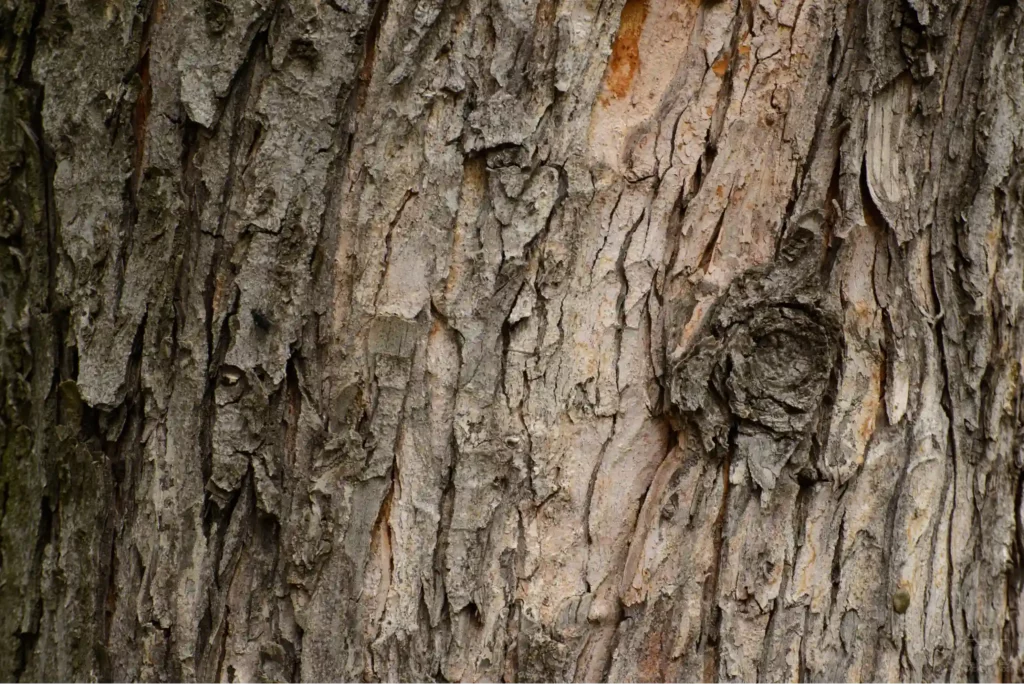
Watch for Peeling or Shedding Bark
Bark sloughs off periodically as part of a natural shedding cycle. How a tree sheds its outer bark tells you a lot about its growth rate and inner structure.
Some trees shed in large sheets, while others release delicate, paper-thin curls. The mechanism depends on how rapidly the inner bark expands relative to the outer layer. In fast-growing trees, tension builds and eventually breaks the outer bark into peelable layers or irregular flakes.
This process also reveals the inner periderm, which may vary in texture and tone, aiding in identification. The presence of consistent peeling across the trunk, rather than isolated damage, suggests a natural exfoliating species, rather than disease or injury.
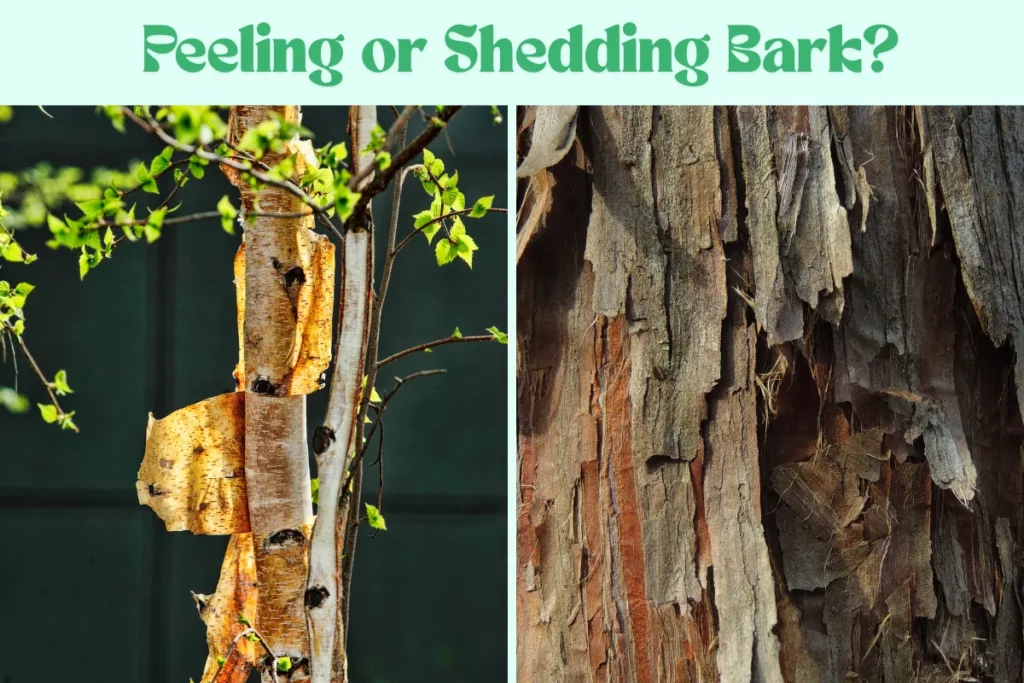
Pay Attention to Bark Color
Bark color may seem straightforward, but it’s surprisingly complex. Most species don’t have a single uniform shade. Instead, they display a mosaic of hues influenced by moisture levels, age, and exposure to light. To evaluate color properly:
- Check in different lighting conditions (morning, overcast, direct sun)
- Note contrasts between bark ridges and valleys
- Observe the presence of overgrowth, like algae, moss, or lichen, that may mask the base color
- Watch for seasonal shifts in saturation or undertone
Many trees also develop color stratification, where outer bark fades or darkens over time, revealing younger layers in contrasting tones. This layering gives essential clues about bark regeneration and the environmental microclimate.
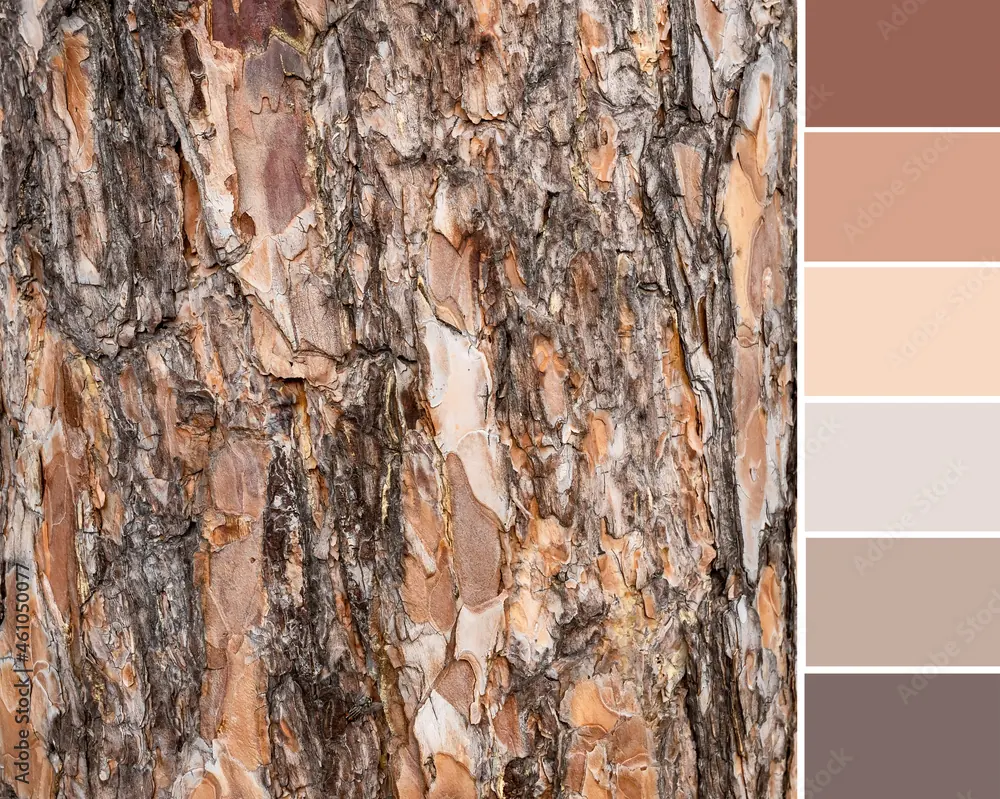
Study Lenticel Density and Shape
Lenticels, small, porous openings in the bark, facilitate gas exchange between the tree’s interior and the outside world. Their size, shape, and density vary across species and age groups. They can appear as:
- Elongated slits
- Raised dots or bumps
- Diamond or lentil-shaped marks
In young trees, lenticels are often more prominent. Over time, they may become less visible as the outer bark thickens. But in particular species, even mature bark retains distinct lenticel patterns, making them a reliable feature if you know what to look for.
Tip: Using a magnifying lens or zooming in on a phone photo helps reveal these microstructures.
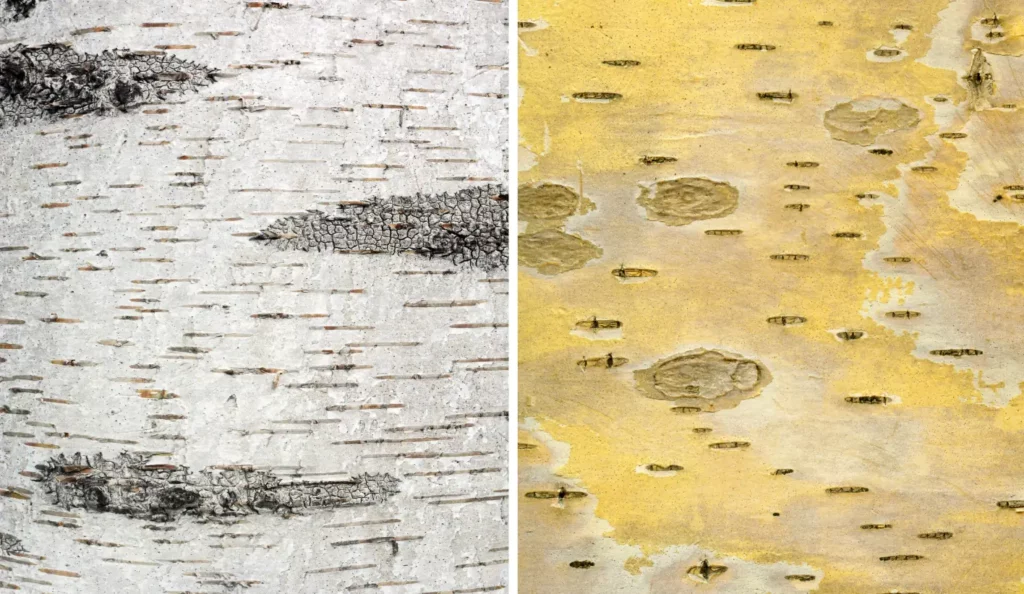
Decode Bark Pattern Geometry
As bark ages, it often cracks in structured ways. The resulting patterns (ridges, furrows, fissures, plates) are shaped by cell division rates in different bark layers and how the tree distributes tension during growth. These patterns tend to follow species-specific formulas:
- Vertical fissures indicate consistent axial growth
- Horizontal ridges may form in slow-growing or compartmentalizing trees
- Blocky or plated patterns suggest a thick periderm that breaks apart unevenly
Pattern geometry isn’t random. It reflects the bark’s internal organization and how the tree optimizes defense or flexibility. Once you learn to recognize specific pattern structures, they become as distinctive as fingerprints.

Notice Scales, Flakes, and Plates
Some trees don’t develop deep ridges or lenticels. Instead, they produce thick, scaly bark that resembles armor or reptile skin. These species often favor longevity over rapid growth, investing in dense protective layers to resist fire, insects, or drought. When analyzing scaly bark:
- Note the thickness of each plate or scale
- Check whether the plates lift at the edges or stay tightly sealed
- Look for underlying color differences. Sometimes, a different layer is revealed beneath the outer plate
Track Seasonal and Moisture-Based Changes
Bark is not visually static. It reacts to external conditions, primarily moisture, temperature, and light. During wet weather, many bark types deepen in color, making patterns more pronounced. In frost, bark may shrink slightly, tightening the visual texture.
Use seasonal shifts to your advantage:
- In winter, the lack of foliage makes bark easier to examine
- After rain, you’ll see richer color contrasts and stronger pattern definition
- In cold snaps, microcracks or sap crystallization may temporarily appear
Photographing bark in multiple seasons creates a more comprehensive identification reference and helps account for appearance variations due to weather conditions.
Spot Unusual Physical Features
Some trees develop distinct physical traits that aren’t shared across species: thorns, ridges, swellings, or textured growths. These structures may be genetic adaptations or responses to stress. Examples of unusual features to study:
- Raised ridges that run along twigs or branches
- Bark that forms wing-like extensions
- Thorns that emerge from the bark itself (not just branches)
- Knobby growths or pustule-like textures
While rare, these traits are often species-defining and offer instant recognition once spotted. They should always be noted as part of the bark’s “signature.”
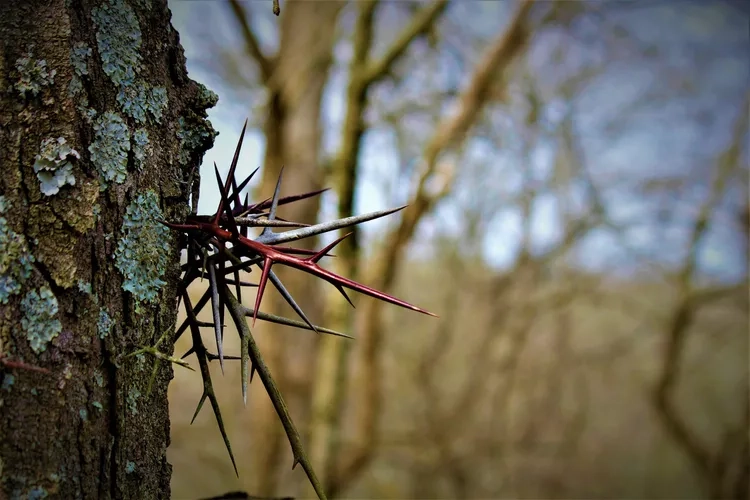
Factor in Habitat and Environmental Influence
No tree grows in isolation from its environment. Bark texture, thickness, and pattern can all be influenced by where the tree is growing. The same species might display variations in bark depending on:
- Soil type (sandy, clay-rich, acidic)
- Moisture availability (wetlands vs. upland slopes)
- Elevation and exposure to wind
- Sunlight intensity and canopy cover
For example, a tree exposed to intense sunlight may develop cracked, sun-hardened bark. In shaded, moist conditions, one might retain smoother, more elastic bark for a longer period. Context matters. Don’t just look at the tree, look at what’s around it.
Regional Examples: Bark Traits by Area
Michigan Tree Identification by Bark
In Michigan’s cool-temperate forests, bark characteristics often reflect a balance between winter hardiness and seasonal moisture. The most recognizable species include:
- Sugar maple bark starts smooth and gray on younger trees. As it matures, the bark thickens and breaks into vertical furrows, giving it a rugged texture, especially noticeable in old-growth stands.
- White pine, Michigan’s state tree, features reddish bark with a layered appearance. As the tree grows, the outer bark flakes off in irregular plates, often revealing lighter-colored wood beneath.
- Paper birch is one of the most iconic examples of birch tree identification by bark. Its bark is brilliant white, smooth to the touch, and peels naturally in horizontal sheets or curls. These layers are thin, almost papery, and make the tree instantly recognizable in both leaf-on and leaf-off seasons.
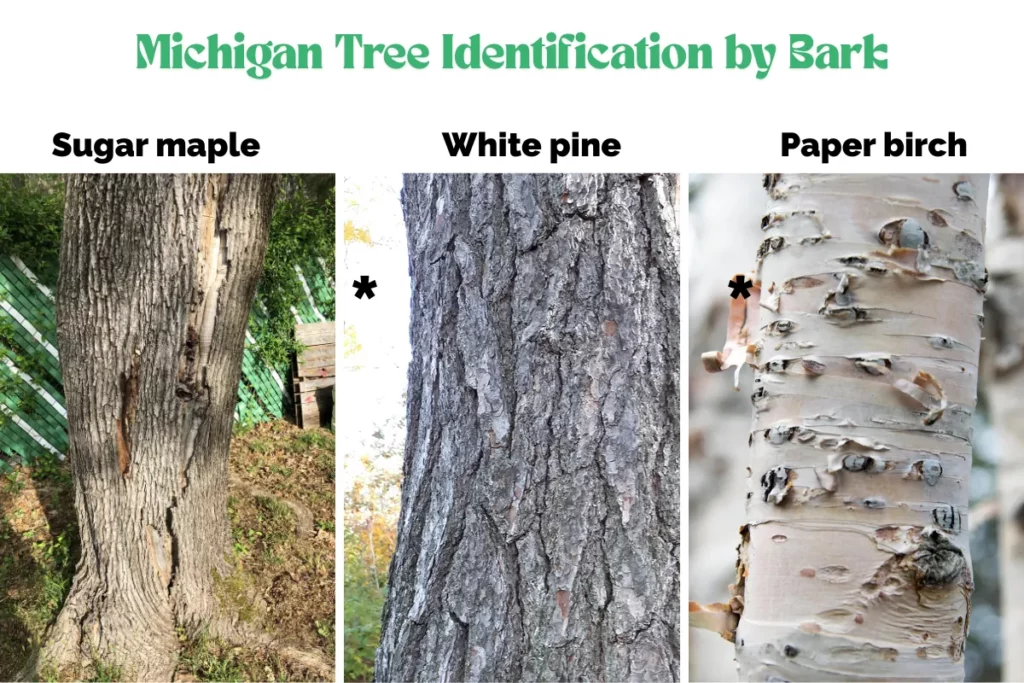
Ontario Tree Identification by Bark
In southern and central Ontario, mixed hardwood forests are home to many species with distinctive bark traits. If you’re doing Ontario tree identification by bark, three common trees to watch for:
- Red oak develops bark that is dark gray to black in mature specimens. The surface forms deep, vertical ridges that appear almost continuous from base to crown. These ridges help the tree manage water runoff and protect its inner layers from frost damage.
- White birch stands out with its smooth, bright white bark that peels in long strips. What makes it especially useful for birch tree identification by bark is the clear presence of horizontal lenticels – tiny lines that allow the bark to breathe.
- Black cherry has a bark texture that looks like a mosaic of dark, shiny chips. This “burnt potato chip” appearance becomes more pronounced with age and serves as an excellent cue for field identification, even in winter.
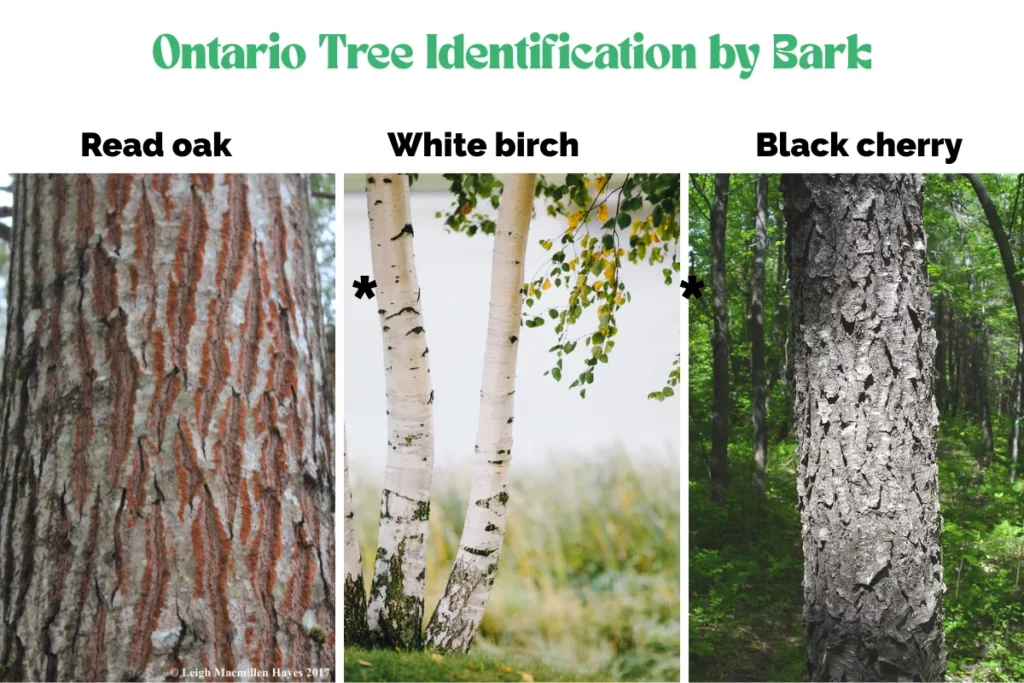
Georgia Tree Identification by Bark
Southern climates, such as those in Georgia, bring heat, humidity, and faster growth cycles, which also result in more dynamic bark development. Here’s what stands out:
- Loblolly pine grows rapidly, producing thick bark early in life. The bark forms large, scaly plates with a reddish-brown tone, often appearing patchy or cracked due to fast trunk expansion.
- Sweetgum bark is light gray with deep, regular ridges that feel hard and angular to the touch. Younger branches often develop corky ridges, or “wings,” that look like flattened spines. These wings fade as the tree matures, but are a great identifier in younger stands.
- River birch is another species to focus on for birch tree identification by bark. Its bark curls and peels in papery layers ranging from salmon-pink to cinnamon-brown. This natural exfoliation helps regulate moisture and heat — an adaptive trait in swampy or flood-prone areas.
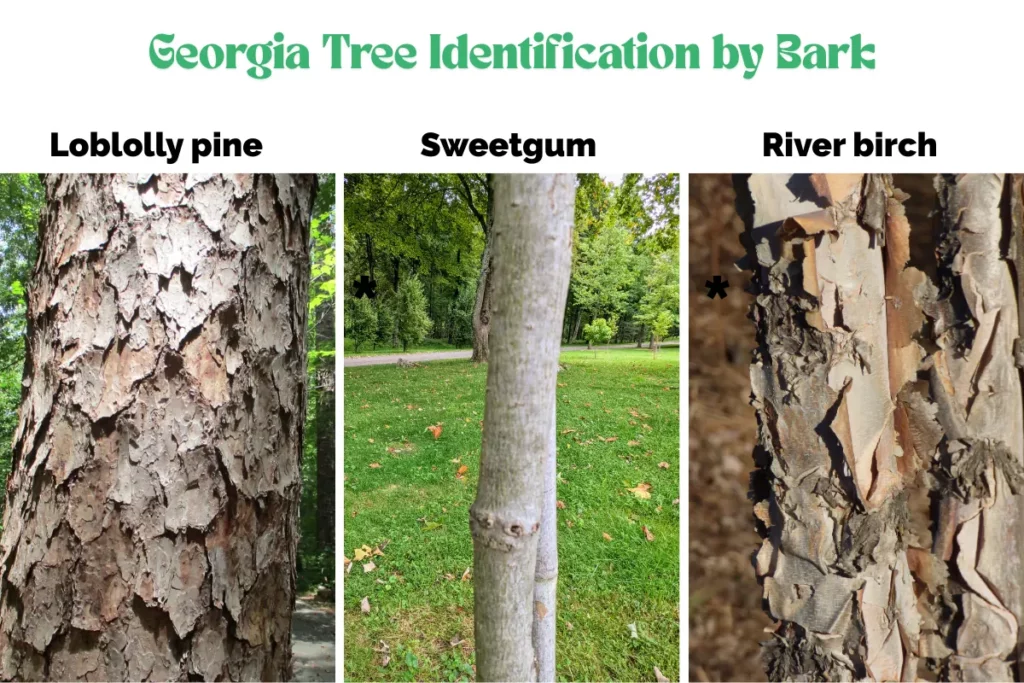
Northeastern U.S. Tree Identification by Bark
The northeastern U.S. has some of the most diverse and well-studied tree populations, with bark that reflects cold winters and high canopy competition.
- American beech is famous for its smooth, steel-gray bark. Unlike many trees, its bark remains relatively unbroken as it ages, which unfortunately makes it prone to carvings and scarring. This smooth surface is easily visible in any season.
- Eastern hemlock shows thin, scaly bark that starts light brown and becomes darker and rougher with age. It often forms vertical fissures but rarely flakes. The bark’s fibrous texture is obvious when viewed up close after rain.
- Northern red oak produces reddish-brown bark with visible vertical ridges. On younger branches, you’ll sometimes notice shiny, silvery stripes between the ridges, a helpful feature for winter ID.
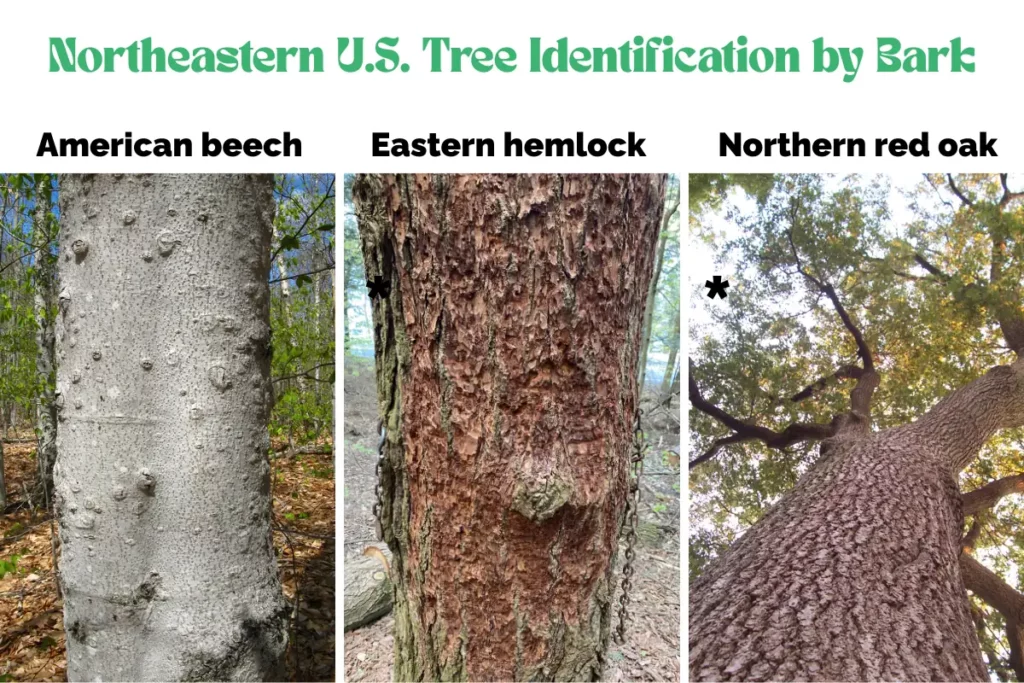
Conclusion
We hope this detailed guide will help you get started with tree identification by bark and make your nature walks even more rewarding. Just remember to take your time and trust your eyes. And when in doubt, open the Planteyes app for quick support in the field.
FAQs
What’s the easiest tree bark to recognize?
Paper birch is one of the easiest trees to identify, thanks to its bright white, peeling bark. Other distinct ones include shagbark hickory (characterized by loose strips of bark) and American beech (with smooth, gray bark that remains unbroken). These species stand out even at a distance.
How does bark change as a tree ages?
Bark usually starts smooth when the tree is young, then thickens and cracks with age. The changes happen in predictable ways depending on the species. For example, a sugar maple’s bark becomes deeply furrowed over time, while pine trees develop thick plates or scales.
Is there an app that helps with tree identification by bark?
Yes! The Planteyes app allows you to take a photo of bark and instantly suggest possible tree species. It’s instrumental in winter or early spring when leaves are absent. Try it out next time you’re outdoors. You might be surprised by what you can learn.
Does the weather affect how bark looks?
Yes. Rain darkens bark and makes textures more visible. Cold weather can cause bark to shrink or crack slightly, especially in thin-barked trees. Seasonal changes also influence color tone, so the same tree may appear different in winter compared to summer.


